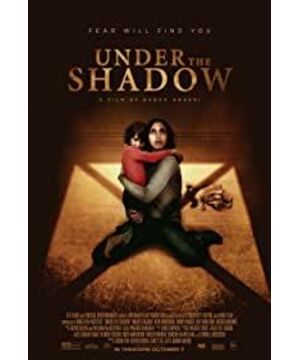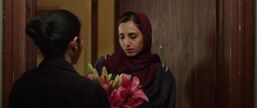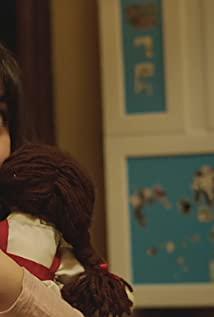Living under the war, I have to give up what I love, my studies, my husband, my friends, and what I love. I can escape these, the answer is no, the war will not stop, and I will never be able to escape the shackles of the shadows. Terror is the appearance, and the core is war. War and humanity intersect, and that's the scariest thing about it.
This is a description of the giant spirit in the film. The whole film does not have too many scenes of spiritual bodies at the beginning. The first part starts with the background of war and history, and it does not start until the missile appears in the style of the film. Change slowly. Her husband's conscription and departure, her mother's death, and various setbacks in her career have put the heroine on the verge of collapse. These various factors are superimposed on her, and the reason is also because of the war.
Djinn, like the wind, is everywhere, as long as there is fear and anxiety, it will exist!
This is a sentence in the movie describing ghosts, there are no ghosts in the movie, and there are no scenes that scare people to pee, Some just look at the constant anxious expression of the heroine, and the former plot explains the background of the movie. What happened around the war had an impact on people. When the missile appeared, along with the disappearance of the heroine's daughter's doll, the painting style suddenly changed, the heroine's daughter began to have a fever, and the heroine gradually became anxious. From then on, paranormal events continued to occur.
There is a particularly interesting scene in the movie: the flying human-shaped sheet, which is also a mockery of the feudal Tehran society. When the heroine was frightened and ran on the street, she might be whipped because she didn't wear a headscarf, which shows how terrifying restraint the feudal system brought to those women.
Iran believes in Islam, and Islam believes that it is a sin for women to expose their bodies. All women should be wrapped in headscarves. Even in the scorching summer, the director must use this lens to criticize today's society.
People in Iran in the shadows have to stay away from their homeland, and the roar of war does not seem to stop. Those hurts brought not only shadows, but also tears of those people. Lost relatives, lost their homes, and where is their "road"?
The heroine's book at the end indicates that all dreams and aspirations will be wiped out in the war era; while the daughter's doll head is more a herald of the harm caused by the war to the child. Djinn is more a symbol of people with high power, because political struggles make people live in dire straits.
The "giant" of war is far more than that. Only in peace, the "giant" will disappear.
The real "giant" happens all the time, in every corner of the world. But in the current political situation, the poor innocent people are suppressed.
Rating:★★★☆
View more about Under the Shadow reviews











